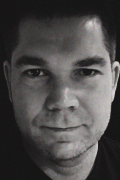TD Magazine Article
Futuristic, Yet Realistic
Nick Shackleton-Jones approaches new technology with one question: How will this make a difference?
Tue Jul 08 2014

Nick Shackleton-Jones is the director of online and informal learning at BP. His career has included roles in media production, e-learning, learning systems, and social media, which have all influenced his current approach to informal learning. Shackleton-Jones manages a small team at BP that is responsible for using technology to help staff develop, perform, and connect. His professional interest is innovative learning technologies that support how adults really learn.
What sparked your interest in the learning profession?
My first job was as a psychology lecturer for a continuing education institute. During that time I spent quite a while wondering how I could apply what I knew about psychology and technology to make the learning process better for my students.
How has your career evolved?
I have been driven by a desire to understand and apply. I moved from teaching in a communications consultancy and learned to use Adobe Flash to develop software. From there I moved to Siemens Communications, the BBC, and now BP.
As a manager, I have found that success comes not from a focus on completing projects, but from a focus on developing myself and my team. Our products have moved from the back of the technology curve to the front; from crude use of Flash and HTML to high-end video, apps, and digital design.
I don't worry too much about my career—I just focus on making a difference, and perhaps it is not possible to do both.
What lessons did you learn along the way?
How learning really works.
To listen to your audience.
The importance of design.
To question convention (and almost no one does this).
That disruptive change can only be done, not justified.
To shift from developing courses to developing resources—then to apps.
That most learning takes place at the point of need.
That people can't explain why they do what they do.
That the world is a product of persuasion, not progress.
How have you seen the profession change in the past 10 years?
Not much. Twenty years ago people were talking about learning "anywhere, anytime" and blended learning; 15 years ago about the 70-20-10 model. The industry changes slowly because it is not subject to evolutionary pressure: Our approaches do not live or die based on their outcomes, but instead persist in an ecological niche. Right now, however, education and Google are a bit like dodos and sailors.
What advice would you give to those new to the training and development field?
Focus on utility and design—ensure that everything you do is really, genuinely useful and beautiful. Then market and communicate. Be tough on yourself; honestly answer the question, "Have I made a difference?" Develop resources, not courses—and start thinking about apps.
